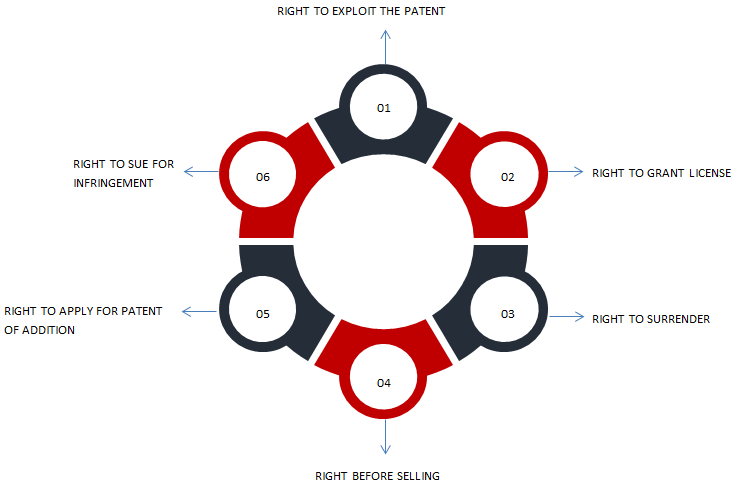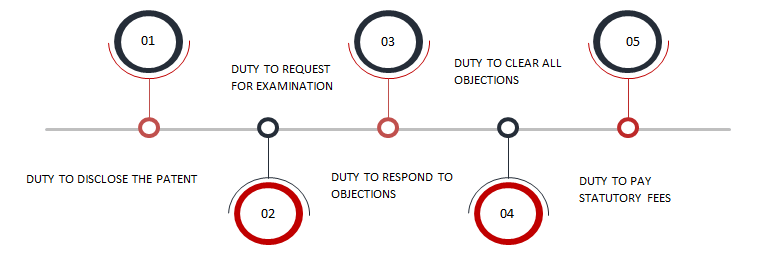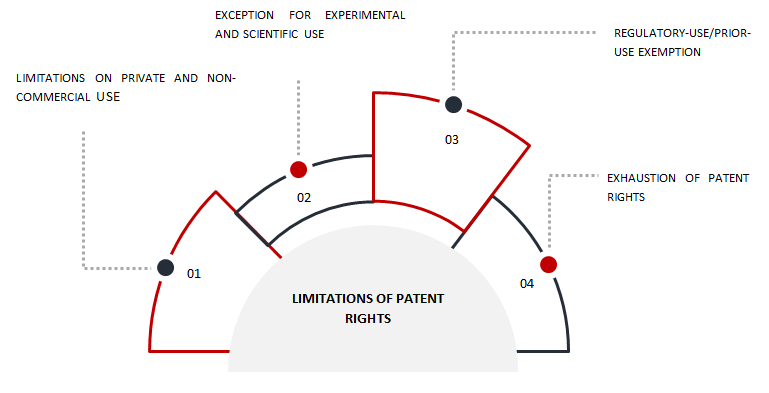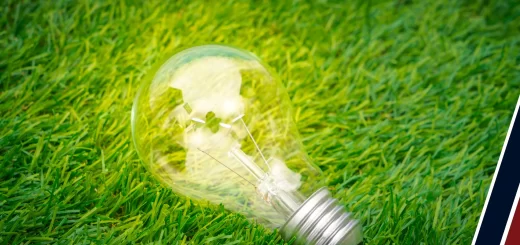Indian Patent Law: Understanding the Patent Rights & Obligations
Whenever an invention is patented, the law confers several crucial rights on the patentee. Unfortunately, despite the rising understanding of intellectual property and its importance for businesses, many inventors and entrepreneurs continue to be unaware of the use and effectiveness of their rights as patent holders. Having the correct knowledge about patent rights enables you to take necessary action if someone is found imitating your invention. In India, the owner of an invention needs to get the invention patented under the Patents Act, 1970 to safeguard it against imitation. The same legislation awards a few rights to the patentee, as well as some obligations that must be fulfilled.
This article will discuss the importance of getting an invention patented, the rights and obligations of patentees, the limitation of patent rights, and remedies for patent infringement. But first, let us understand the fundamental concept of a patent.
Table of Contents
What is a Patent?
As defined under the Indian Patent Act 1970, the term ‘patent’ means a patent granted for a new process or product involving an inventive step and capable of industrial application.
Patents are exclusive statutory rights granted to the patentee by the government for a limited period in lieu of full disclosure of an invention. They provide a monopoly to the patentee to exclude others from using, making, offering for sale, selling, or importing the patented products. In addition, for a subject matter to be patentable, the invention must meet the criteria mentioned in Figure 1 below:

- Patentable Subject Matter: An essential consideration for an invention to be patentable is determining if it is related to a patentable subject matter. Sections 3 and 4 of the Patents Act, 1970 explain the non-patentable subject matter. If the invention does not fall under the provisions of Sections 3 or 4, it means the invention has patentable subject matter (subject to the fulfilment of the other criteria).
- Novelty: Novelty is the central theme in identifying the patent potential of an invention. In simple words, the novelty requirement emphasizes that an invention must never have been published in the public domain. In addition, it must be new with no identical or similar prior arts.
- Industrial Applicability: The criterion of industrial applicability is defined in Section 2(1) (ac) of the Patents Act, 1970 as “the invention is capable of being made or used in an industry.” It must have some industrial application, which means there has to be some practical utility to be patentable.
- Inventive Steps or Non-obviousness: Inventive step is defined under Section 2(ja) of the Patents Act as “a feature of an invention that involves technical advance as compared to the existing knowledge or having economic significance or both and that makes the invention not obvious to a person skilled in the art.” It means that the invention must not be apparent to a person skilled in the same field the invention relates to. It must be inventive and unclear to a person qualified in the same area.
- Specifications: Apart from the criteria mentioned above, another important factor for getting a patent is patent’s disclosure. The disclosure of a patent means that the patent draft should reveal the invention sufficiently to help a person skilled in the same field as the invention relates to in executing the invention without extra effort. If the patent specification does not enable a person with reasonable skill and knowledge in the concerned field to apply the invention, then a patent will most definitely not be granted.
Patentability requirements can be understood as filters arranged in continuity to verify the registration scope of new inventions. Only inventions which pass through all the filters are eligible for a patent grant, and those that get filtered out are refused.
After understanding the fundamentals of patents, it is crucial to know the need for getting your invention patented.
Why is it Important to Have an Invention Patented?
The patent enforcement ensures that the inventor’s intellectual property rights are duly protected. It confers exclusive rights to the patent holder regarding the sale and manufacture of the patented product. This right empowers the inventor to regulate the users regarding how it can be used, and to what extent it can be applied. To enforce these rights, an inventor must apply for a patent grant for the invention. After the completion of formal processes and considerations, the exclusive rights are granted to the inventor. Four critical points that make it important for an invention to be patented are listed below:
- Protection from theft
- Ensured exclusivity
- Commercialization
- Increased brand and money value to the invention
Once a patent is granted, the patentee is immediately assigned rights enforceable in a court of law. In the next section, we will discuss the rights of a patent holder.
What are the Rights of a Patent Holder?
The patent holder enjoys various privileges, including assigning licenses to other persons and authorizing them to sell and manufacture the patented item. However, it is important to note that these are not absolute rights and are subject to various constraints and limitations.
In the global context, Trade-Related Aspects of Intellectual Property Rights (TRIPS) agreement that came into effect on 1 January, 1995 is the most holistic multilateral agreement on intellectual property. The areas of intellectual property covered under it are:
- Copyright and related rights (i.e. the rights of producers of sound recordings, performers, and broadcasting organizations)
- Trademarks, including service marks
- Geographical indications, including appellations of origin
- Industrial designs
- Patents covering the protection of new types of plants
- The layout designs of integrated circuits
- Unrevealed information, including trade secrets and test data
Article 28 of the TRIPS Agreement ensures the following for patent holders:
- Where the subject matter of a patent is a product, it prohibits third parties from the acts of using, making, offering for sale, selling, or importing that product without the patent holder’s consent.
- Where the subject matter of a patent is a process, it prohibits third parties from the act of using the process, offering for sale, selling, or importing without the owner’s consent.
Patent owners shall also have the right to assign the patent, transfer by succession, and conclude licensing contracts. In addition, under the Indian Patent Act, the patentee also enjoys certain rights as mentioned in Figure 2 below:

1. Right to Exploit the Patent
In India, the patent holder is honored with the right to use, sell, manufacture and distribute the patented product. In case the invention is a production process, the owner of the patent reserves the right to share the procedure with another person. Moreover, the agent of the patent holder can also enforce this right.
If a new invention is a product, the patentee gets the exclusive right to produce, use, and distribute an invention in India for specific applications. On the other hand, if the invention covers the manufacturing process or process of some substance or article, the right to exploit includes the sole right to practice or utilize the manufacturing process or system in the territory of India. The Indian patent law also considers a patentee’s exclusive right to seek market advantages from the invention. It encourages artists to invest in their creative actions, realizing that their inventions would be protected by statute and no one else can replicate their innovations within a certain amount of time (mostly 20 years).
2. Right to Grant or Assign Licenses
The patent holder enjoys the right to assign or grant licenses for manufacturing and distributing the patented products to other parties. In instances where there are co-owners of the patented product, all the patent owners must collectively grant the license to a third party. The license is considered to be granted only after the Controller has duly authorized the request. Therefore, to be legal and lawful, the assignment or license must be in writing and should be documented with the Patent Controller.
3. Right to Surrender the Patent
The patent owner possesses the right to surrender the patent after seeking due permission from the Controller. Then, the Controller advertises this surrender as per the rules laid down in the Indian Patent Act. The parties interested in getting the ownership of the patent can directly approach the Controller. Afterward, the Controller examines the party’s claims and grants the ownership. The transfer happens only if the owner is willing to surrender the patent.
The patentee has the right to forfeit a patent at any point and their initiative by sending notice in a specified manner. This includes publishing ads in the journal with an offer to surrender the patent.
4. Right before Selling
As per Section 24 of the Indian Patents Act, a patent is sealed from the date of notification for acceptance to the date of acceptance of the notification. The patentee’s right comes into play after the notification for acceptance is presented.
5. Right to Apply for the Patent of Addition
Section 54 to 56 of the Patents Act, 1970 provides for this provision. The provision allows for modifications in the existing invention. In such instances, the patent holder is granted the right to the modified invention once the notification of acceptance comes out. After the notification is presented, the owner is granted the same rights as the previous patent.
6. Right to Sue in Case of Infringement
When any patent holder’s rights are violated, it is termed as patent infringement. A patentee can approach either a district court or a high court for the redressal of any grievance arising out of the violation of rights. If the defendant is found guilty of infringement, the courts will either grant a permanent injunction or award the plaintiff damages it sees fit.
Patentees are also responsible to fulfill certain obligations once the patent and the related rights are granted. In the next section, we will discuss the myriad obligations that every patentee in India must fulfill.
What are the Obligations of Patentees?
Obligations of patentees can be broadly covered under five points as shown in Figure 3 below:

1. Duty to Disclose the Patent: Section 8 of the Patent Act, 1970 requires the applicant to disclose the invention to the public. Section 8(1) of the Patent Act, 1970 categorically states that the patentee is obligated to disclose all necessary data concerning the remote application of identical or near-identical invention documented, at the time of filing patent application or within six months of applying. It is also required that the patentee record all the listed specifications in the applications. Besides, the patentee should also endeavor to disclose any points of interest in the subsequent applications that may be documented in the future.
Section 8(2) of the Patent Act, 1970 states that the patentee is obligated to furnish all the data needed by the Controller concerning the invention’s within six months of raising the request.
2. Duty to Request for Examination: Unlike other intellectual property rights, the patent registration process does not leave space for any kind of programmed examination for the grant of a patent application. Section 11(B) of the Patents Act, 1970 clearly lays the obligation on the patentee themselves to request the Controller to have a look at the development or growth of the patent.
3. Duty to Respond to Objections: Before permitting the examination request, the Patent Controller shares it with an analyst who assesses the growth and forwards the report, known as First Examination Report (FER), to the Patent Controller. In certain instances, some objections will be brought up in the First Examination Report. Patentees are obliged to reply to such opposition complaints. They are also required to correspond within a year of the issuance of FER. The failure to do so will lead to the automatic surrender of the patentee’s application.
4. Duty to Clear all Objections: The patent owner must reply to all opposition and clear all objections raised against their invention. In case the Patent Controller has not fulfilled their duty, a meeting may also be required. If the applicant fails to address the objections, the Patent Controller has the right to assign the patent rights to any objecting party.
5. Duty to Pay Statutory Fees: The patentees are also obliged to bear all the statutory expenses needed in the registration process to receive the patent grant. The failure to make the payment will lead to the non-consideration of the patent for the grant. Sec 142 of the Patent Act, 1970 is related to the payment provisions of necessary charges and the ramifications for non-payment of prescribed fees.
Although patent rights may seem very comprehensive, it has their limitations. In the next section, we will discuss the same.
What are the Limitations of Patent Rights?
Figure 4 below shows the four main limitations of patent rights.

1. Limitations on Private and Non-Commercial Use
Under this limitation, the patentee is curtailed from utilizing the invention for private purposes or imposing a monopoly over commercial activity. If the government thinks that the patent holder is not leveraging the patented invention for commercial purposes, then it has the right to grant a compulsory license to a third party. Section 84 and Section 92 of the Patents Act, 1970 lay out the need for a mandatory license. It can be invoked if the patented item is not available to the general public for use at affordable prices. It is generally observed in cases of pharmaceutical drugs. Another provision in the patents act relates to the limitations on private and commercial use which is covered in Section 85 of the act. It talks about the revocation of patents by the Controller in case of non-use.
2. Exception for Experimental or Scientific use
This limitation is covered under sub-section 3 of Section 47 of the Indian Patent Act. The exception states that any individual can utilize the patented process or product to undertake any scientific experiment or conduct research. This exception to patent rights was introduced to protect those conducting bona fide research works and experiments. It allows the third parties to conduct research using the patented material without being accused of infringing on the patent holder’s rights.
3. Regulatory-Use/Prior-Use Exemption
Although providing patent rights to the patentees encourages new inventions, it can also lead to monopolies and strictly private use of the patented products. Because of this fear, Section 107 A was added to the law through the Indian Patents Amendment Act, 2005. The provision provides an exemption to the manufacturers of generic drugs to use the patented product for research and development purposes, and therefore enables them to seek marketing approval beyond the country’s boundaries. It is also known as the Bolar provision or Bolar exemption in India. However, the manufacturers can only manufacture, use, and sell the product in the market after the patented products’ expiry date, i.e., 14 years from filing the patent application.
4. Exhaustion of Patent Rights
This provision states that the inventor’s patent rights get exhausted once the patented product is sold in the market. As per this limitation, the patent holder loses control over the product once the first unrestricted sale of the invention is observed. The logic behind the formulation of this constraint was that once a patent holder sells the invention in the market, the objective behind granting a patent for the particular product is lost. It implies that the patent holder has provided the right to manufacture, use, and sell the patented product to another individual, losing the exclusive rights.
Notwithstanding its few limitations, enforcement of patent rights comes in extremely handy in cases related to patent infringement. The next section elaborates on the remedies available for patentee against patent infringement.
What are the Remedies for Patent Infringement?
Patent infringement is the illegal or unauthorized manufacture or use of an invention or improvement on another’s invention or subject matter without taking the owner’s consent either by waiver or license. Rights in the Indian Patents Act allow plaintiffs to recover fair compensation from the infringer. The various remedial options in patent infringement litigations include equal relief and costs, monetary relief, and attorney’s fees.
Monetary Relief: Compensatory damages are made available to the plaintiffs to deter individuals and companies from infringing on someone’s patent rights – thereby limiting the cases of patent infringement. Three types of compensation under monetary relief are listed below:
- Indemnity Compensation: A patent owner incurs financial loses when the patent product or technology is infringed on. Indemnity compensation helps the patent owner recover these losses.
- Increased Damage: In cases of willful violations, damages of up to three times the reasonable compensation arrived at after standard calculation may be awarded to the plaintiff.
Equitable Relief: A court of law issues an order to prohibit a person from doing anything or acting. There are two types of injunction listed below:
- Preliminary Injunction: This order passed in the initial stages of lawsuits prevents parties from performing a disputable act, such as making a patented product.
- Permanent Injunction: This is the court’s final order that permanently stops specific activities or initiates other concrete actions.
Conclusion
The patentee’s rights have been clearly enshrined under the Patents Act, 1970. Despite that, there are numerous cases of patent infringement. The violation of patentee’s rights can be resolved only when the laws are suitably placed, and the laws changes with the time, adjusting to the changing situations. Patentees have the exclusive right to move to the court in case of infringement of their patent rights. But the rights of the patentee should be exercised within the prescribed limits of the law. It is crucial to be fully aware of your rights and enforce them to reap the maximum benefits. In addition, patentees must also be aware of the limitation of these rights, as well as obligations required to be fulfilled. Since understanding all of this can be a difficult task for anyone, it is always advisable to avail services of a reliable third party in such matters.
Sagacious IP has an efficient process to deliver cutting-edge solutions for its clients. Through its India Patent Filing and Prosecution services, it enables you to secure your invention, by leveraging a solid patent draft prepared by a skilled patent attorney that ensures your invention is protected most swiftly and cost-effectively. Visit the page through the link above to know more about this service.
– Sameeksha Shukla (IP Filing and Prosecution) and the Editorial Team
Having Queries? Contact Us Now!
"*" indicates required fields




